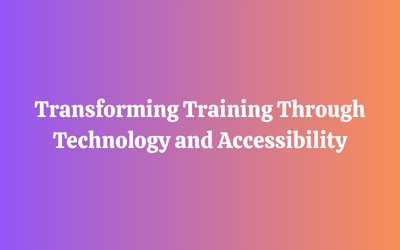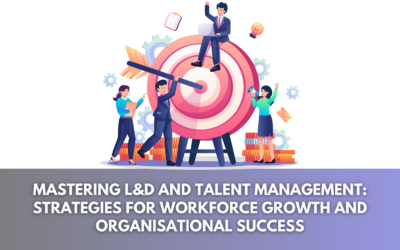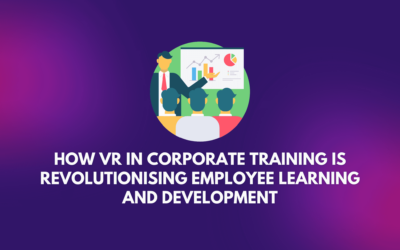What Is Internal Mobility and Why Do You Need It?
What Is Internal Mobility and Why Do You Need It?
Employee migration within a company is known as internal mobility. This is furthered by an internal mobility plan, which establishes a procedure or structure for transferring current personnel between roles both laterally and vertically. Internal mobility and career agility—that is, a worker’s capacity to keep up with the demands of the contemporary business environment—are strongly related in some businesses.
You might be asking why internal mobility is becoming more and more popular, or why employees are choosing to work for companies with internal mobility programs. Before we can respond to these questions, we must first comprehend internal mobility and why it is crucial to the success of both small and large businesses.
We’ll explore in-depth on internal mobility in this article and demonstrate how to create a plan for it. For you to start utilizing your talent and skill sets, we’ll also discuss some internal mobility best practices. Let’s get going!
What is internal mobility?
Internal mobility has been briefly defined above, but it encompasses more than just the transfer of talent from one function to another.
Internal mobility, career mobility, or talent mobility are all terms that are sometimes used interchangeably to refer to the movement of talent between roles. A lateral transfer would have a person moving from one post to another with the same degree of seniority, while a vertical move may involve a person moving from Vice President to President.
Although it can be tempting to hire new staff or fill unfilled positions with outside candidates, internal mobility offers more benefits than simply helping to fill positions. Also, it motivates current workers to gain new skills, enhance old ones, and continue to be invested in their jobs and your business. Additionally, internal mobility puts pressure on executive teams and managers to guide, coach, and support the people they are in charge of.
One illustration of internal mobility
Let’s examine this definition of “internal mobility” in more detail.
When you hire for a new or open position, you are probably looking for a particular skill set or set of qualifications (like a marketing exec or finance manager). But, you might already have an employee that has the necessary skill sets, credentials, or experience for that position, and they might be open to switching jobs.
Alternatively, a recruit can be the ideal candidate for the position but also have the qualifications for a different position. They could transfer to a different role or division and yet contribute significantly to the team. Hence, even if the new employee may have been hired for the position of marketing manager, that doesn’t mean that when they gain more experience working for your company, they won’t wish to upgrade their skills or move to a different area.
An internal mobility strategy is not only beneficial in these situations, but it is also essential.
Why does internal mobility matter?
Internal mobility is thus unquestionably necessary for every organization that wants to be future-proof. But why, you could be asking.
According to research, 40% of workers in the USA alone have changed positions since 2020. Companies must have a comprehensive plan in place to secure the growth and success of both their businesses and their employees in light of the Great Resignation and the global pandemic aggravating the competitive talent market.
Before they even think about looking internally at the talent they already have, many businesses, while trying to fill available jobs or new ones, turn outwards. Today, it is more challenging to establish career pathways and tracks for people because responsibilities change and abilities evolve.
When it comes to attracting and keeping talented personnel, you have to juggle several tasks at once. There are demands from employees to upgrade their abilities, attempt new projects, collaborate with different managers, and pick up supplementary knowledge.
Internal mobility can be quite helpful in assisting you in securing, fostering, and expanding your current talent in this regard.
Adapting to the new reality of hiring talent
Agile hiring is the way of the future, as we have already stated. According to Jane Austen, it is a commonly known truism that a recruiter who has top talent must need additional talent.
Indeed, that isn’t exactly what Austen stated, but it’s still near, right?
Your hiring teams (and all team members who have an impact on hiring decisions) can no longer expect to employ enough people to completely satisfy all of the skills, qualifications, and experience gaps. You must be receptive to the notion that agility is the name of the game if you want to succeed.
Internal mobility enables your teams and organization as a whole to move and develop existing personnel with greater agility and efficiency, enabling you to expand your company’s most valuable resource: its employees. Even though this strategy is gaining ground in popularity, businesses are still finding it difficult to succeed with internal mobility:
- About 6% of businesses consider their internal mobility to be exceptional.
- Internal mobility is crucial to 76% of firms, yet only 40% of them are prepared for it.
- 56% of businesses believe they are not utilizing their existing talent to its full potential.
- 37% of businesses think it’s simpler for workers to obtain a new position with a different company than with their present one.
To rise to the new reality of talent acquisition, hiring teams and employers alike have to be aligned on a more agile, internal process or plan for leveraging existing talent.
Meeting top talent’s requirements
It is no secret that the need for talent is growing as more businesses struggle to fill existing positions and new positions. But what if you didn’t have to fight to play those parts? Internal mobility might be the solution to such recruiting problems.
Workers today need more options for learning, development, and growth than just a 401k and paid time off. Because of this, more recruiting managers and businesses are emphasizing retention and engagement, both of which are highly indicative of employee satisfaction and corporate culture. This assumes double the significance when you realize that while just 48% of workers are actively looking for work, 74% of disengaged workers are open to new employment alternatives.
But more on that later. It’s essential to make sure you have a strategy in place that supports current talent.
Top 3 reasons internal mobility matters
Everybody is aware that a business is only as good as its employees. But, it can be tempting to enlarge your teams before thinking about how to rearrange and advance the individuals you already have. Your workforce is frequently your best source of talent. However, only 36% of workers believe their companies are doing a good job of promoting internal mobility.
Let’s take a peek at the top 3 reasons internal mobility matters.
Careers no longer follow a straight line
Nowadays, it’s uncommon for our careers to proceed in a straight line; instead, they tend to be wavier, allowing us to progress over time inside the same company through lateral and vertical shifts.
Recruiting from inside gives existing talent the chance to enhance their talents while also accommodating the jungle gym-like careers that many of us have. On the other hand, firms are exempt from having to compete in a talent market where demand is high.
Retention has taken on a whole new meaning
There is no one-size-fits-all retention strategy in the midst of what is now being referred to as the “Great Discontent,” as more enterprises are increasingly realizing. According to studies, there is a 20% global employee engagement rate, which indicates that more and more workers are becoming dissatisfied with their occupations.
One of the worst things about this? an absence of prospects for career advancement. At least 75% of the causes of expensive turnover, including development, are factors that managers can directly control.
Giving existing talent the chance to develop and flourish is essential since retention is increasingly getting harder. Outsourcing and algorithms won’t help you find the people you need, as Capelli puts it. Internal mobility is a workable answer for many organizations, although retention doesn’t look the same for every firm in this regard.
There’s room for potential (and a lot of it)
Your teams can predict the future potential of talent—both current and freshly hired—just as your company can predict future performance and operations. There is an opportunity to strengthen and expand current teams as well as to approach hiring with a long-term perspective.
Examine your personnel and business strategies to see where your company is headed and where skill gaps and new possibilities are likely to emerge in the future. By doing this, you can create a more complete picture of your talent, how you can use their skills, and what you can do to support their upskilling for both your future and theirs.
Approach recruiting in the same manner you would when hiring. What potential do applicants have to assist in meeting your present and future needs? Which competencies do candidates possess that will help your teams both now and in the future? Keep in mind that you’re recruiting for the long run as well as the short term.
Ready to recruit top talent to future-proof your organization?
Using your top workers and emphasizing candidates’ future potential will help your recruiting team and company as a whole adjust to the expectations and reality of hiring today in a world where talent competition is severe. Recruiters are equipped with all the knowledge they need to promote internal mobility thanks to our comprehensive internal mobility handbook. Here you can download a free copy of our handbook.
Learn More
Our News
- AI
- Animations
- Articulate
- Articulate 360
- Articulate Engage
- Articulate Live
- Articulate Presenter
- Articulate Quizmaker
- Articulate Replay
- Articulate Review
- Articulate Storyline
- Articulate Storyline 3
- Articulate Studio
- bite sized learning
- Characters
- Content Library
- Corporate Communication
- E-Learning
- e-Learning Authoring Tools
- Employee Engagement
- Game-Based Learning
- Gamification
- Gamiflexer
- Go Sales
- Healthcare
- Instructional Design
- Interactivity
- Knowledge Transfer
- L&D Trends
- Learning
- Learning & Development
- Learning Experience platform
- Learning Management System
- LMS
- LXP
- Microlearning
- mLearning
- Mobile Learning
- Nugget Learning
- Online Training
- Peek
- Performance Support
- Preso
- Quiz and Assessment Platform
- Replay 360
- Rise
- SCORM
- Screen Capture
- Software
- Storyline 360
- Studio 360
- Training Management
- Trainings
- Uncategorized




